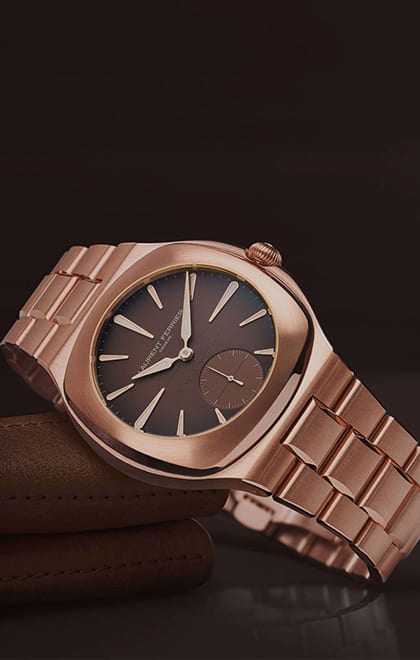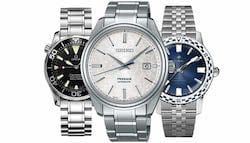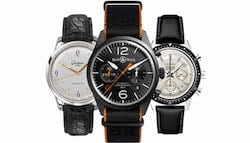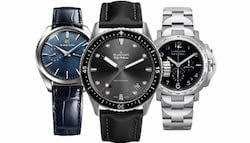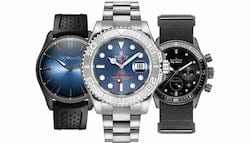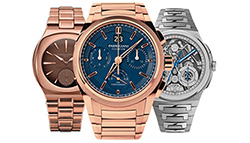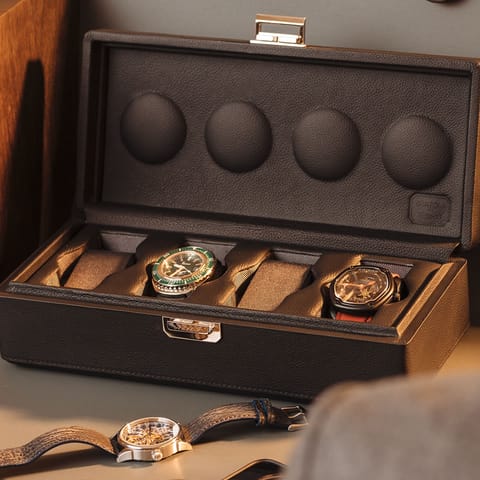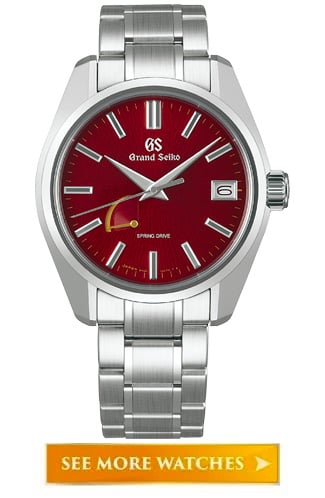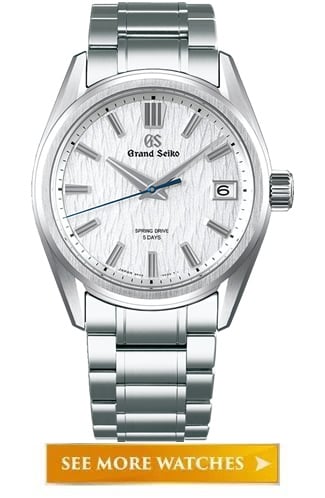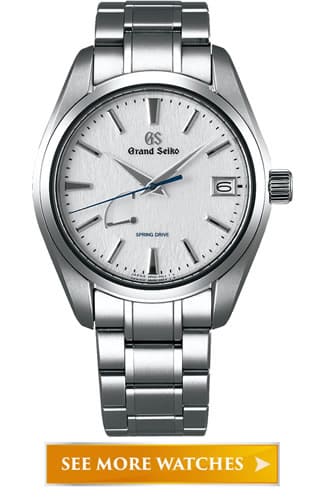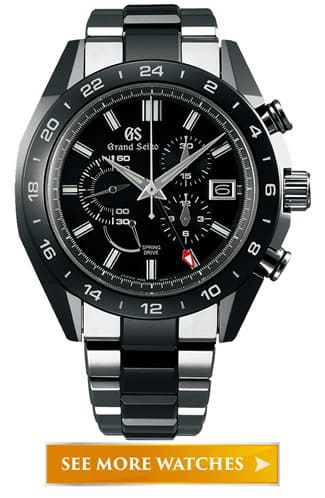Grand Seiko Watches
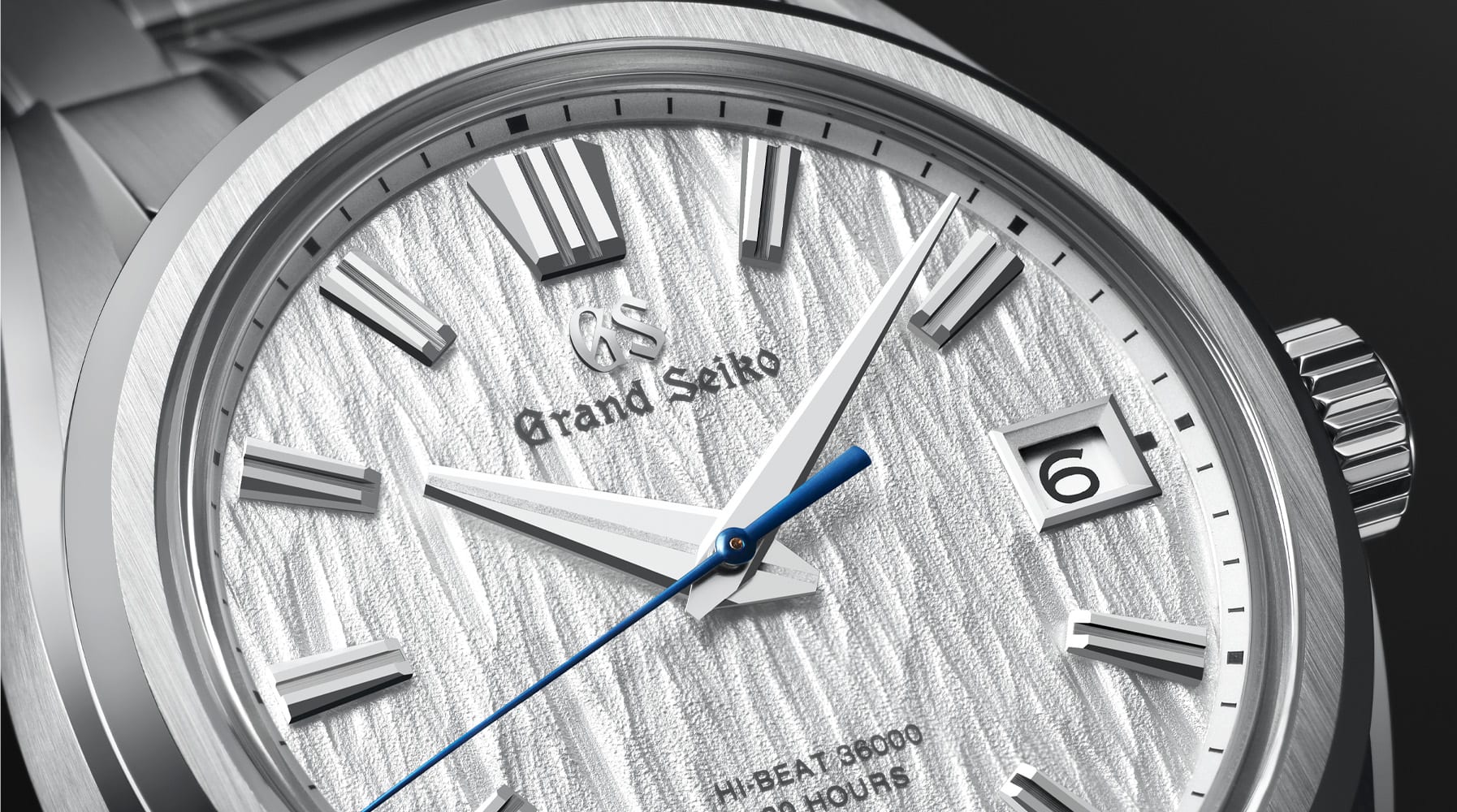
Grand Seiko watches are well known in the global community as high-quality timepieces. Having won chronometry competitions in Japan, the watchmaking experts of Grand Seiko wristwatches have placed innovative engineering as their top priority. Grand Seiko watches continue to impress wearers and collectors around the world with their iconic designs and acclaimed mechanical precision. Inspired by nature and motivated by precision timekeeping, the Grand Seiko watch series would be an excellent choice for any luxury watch admirer. Looking for Grand Seiko watches for sale can be tough when you do not have the right help. If you are looking for the best place to buy Grand Seiko watches, Exquisite Timepieces can assist you. Exquisite Timepieces is a Grand Seiko authorized dealer.
Grand Seiko
The creation of Grand Seiko was followed by another wristwatch from the Seiko’s collection, called Marvel. At the time of its manufacture, which was in 1956, this mechanical timepiece stood as the most precise and one of the highest quality watches in Japan. This wristwatch, with its manual winding mechanism and 17 jewels, made a giant leap when it comes to precision of wristwatches. From thereon, Seiko competed and won first place for its innovative watch in many national chronometry competitions in Japan.
Encouraged by its success, Seiko decided to put its engineers to work and create a watch that could potentially challenge round the world-acclaimed Swiss industry of timepieces. One of the most distinguished engineers at that time and for the time to come, was Tsuneya Nakamura, the person behind the Seiko Marvel and the person who was given charge of designing, developing and launching the brand new exclusive line of Grand Seiko wristwatches. He and his team aimed at making the most precise, durable and elegant masterpiece of a watch that would bring Japan to the forefront of the watch industry. The first Grand Seiko Ref. 3180 (also known as The First) made its debut on December 18, 1960, in Tokyo. It was based on the Suwa Seikosha’s proprietary movement, ticking at the speed of 18,000 vph and providing accuracy of -3/+12 seconds a day and 45 hours of power reserve. With the word "Chronometer" stylized on the dial, this watch carried itself with a simple and elegant design. Most of the Firsts had a gold case, with some being platinum, and nearly every one of the Grand Seikos, excluding few, has been carrying a lion symbol on the back of the case. This symbol was chosen by Suwa Seikoshi, for as he believed that the Grand Seiko would the King of all watches, in the same manner as Lion was the King of all animals.
In 1964, a new Grand Seiko line came out and it was designed by observing the Teiko’s Grammar of Design series of 4 rules: first, each element of the watch had to be flat and geometrically impeccable so as to best reflect light; second, bezels had to be simple, two-dimensional faceted curves; third, no visual distortion was allowed and all cases and dials had to be mirror-finished; fourth, all cases must be one of a kind for each reference with no basic round case designs. The application of these 4 rules required for the standards of quality and finishing implemented in production to be changed and improved and for new and pioneering advertising techniques so that the new line of Grand Seiko watches would achieve success on the international market. This fresh and innovative design immediately stood apart from its predecessors upon its launch in 1964. This Grand Seiko 57GShad elongated, hexagonal case with flat angles and words Seiko Chronometer stylized on the dial. As imposed by the European Chronometer Official Association, a watch that was chronometer rated had to be tested by an independent external testing body in order to be conferred upon the Chronometer designation. Considering that Grand Seiko watches did not go through independent testing, and the 57GS carried the designation Chronometer, the ECOA demanded that the designation be taken off. The Japanese watchmakers decided to found a Japanese Chronometer Authorization Association that would act as an independent body that was supposed to test the compliance of watches with the chronometer standards and the 57GS was granted the right to continue using the Chronometer designation.
After several unsuccessful trials with the Neuchatel Astronomical Observatory in mid-1960s, Seiko made some design and function changes and decided to resubmit its watches and the results were outstanding, with GS watches placing in the top ten. Several years after being consecutive in the top ten, Grand Seiko watchmaking team released the movements 61GS and 45GS. These Grand Seiko watches carried the designation "Very Fine Adjusted" as their accuracy levels were -2/+2 per day which was superlative when compared to the then current Swiss watches.
The Grand Seiko watch Ref. 62GS, released in 1967, was the first automatic watch. The usual location of the crown was moved in 62GS to 4 o’clock, a move that was purposely taken to emphasize the fact that it did not need manual winding. The 62GS had a high-beat rate of 19,800 bph and in the years to come, Grand Seiko developed many high-beat movements, also known as hi-beat. Higher frequency meant that smaller units of time could be measured.
The later years of the 1960s saw many watchmaking brands working on quartz movements; however Seiko was the first one to release a quartz movement inside a watch. The last Grand Seiko mechanical watch was released in 1972. Sixteen years after the manufacture of the entire brand ended, the 95GS was launched, featuring the first ever quartz movement inside a Grand Seiko. The calibre precision of 95GS was 10 seconds per year, superior to many other quartz movements.
However, by that time, quartz was a thing of the past formany watch brand companies, who decided to go back to placing mechanical movements in their high-end watches. However, Seiko decided to continue using quartz movements, claiming that their quartz application was for simply technological purposes, as quartz meant higher accuracy. Although proud of their quartz calibres, in the mid 1990s, Seiko decided that in order to fulfil the demands of the market, it needed to reinvent its mechanical movement watches. In 1998, Seiko produced its first entirely new mechanical movement the 9S. It was available in two versions, the 9S51 with no date, and 9S55 with date. The 9S calibre was fitted with a special mainspring that, at a time when watches provided a 40-hour power reserve, made possible for a 50-hour power reserve, and was only available in Japan. This 9S calibre brought in the possibility for a mechanical GMT, thus the Grand Seiko 9S56 was created, featuring a fourth hand indicating GMT.
The Grand Seiko’s Spring Drive, the idea that started in 1977 and was initiated by a young, aspiring engineer Yoshikazu Akahane, debuted in 1999. Yoshikazu Akahaneaimed to achieve an accuracy of a quartz movement inside a movement powered by conventional mechanical systems. He spent 21 years trying to achieve develop and perfect this technology with more than 600 prototypes and eventually succeeded. This Spring Drive technology is considered a hybrid of quartz, mechanical, brand new Seiko proprietary elements and designs, and it also pushed for the change of Grand Seiko visual design. Seiko’s designs are quite often said to be inspired by nature and the best example for this is the Grand Seiko Snowflake, or SBGA211, the most iconic Grand Seiko watch. The GS Snowflake is a beautifully accomplished timepiece, with a textured dial alluding to a wind-blown snow.
In 2006, Seiko launched a Grand Seiko Spring Drive caliber featuring GMT, known as 9RSS. Besides the standard seconds, minute and hour hand, GS Spring Drive GMT also has a GMT, or Greenwich Mean Time, hand. The Spring Drive technology was also the base for a Grand Seiko Diver’s watch, not the first diving watch in the Grand Seiko line, but the first to have a power reserve indication and the accuracy of 1 second per day. Its water resistance rating is 200 meters.


